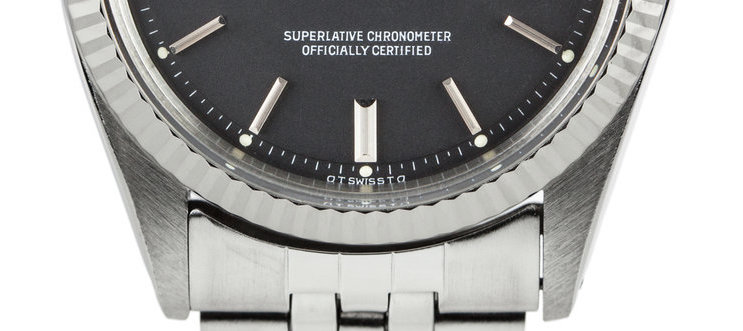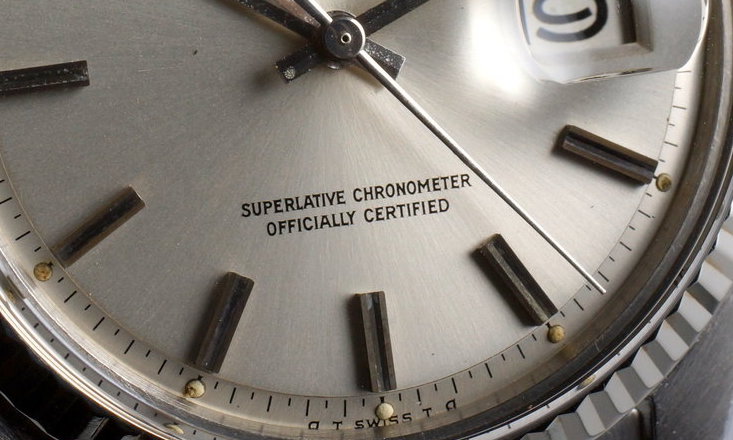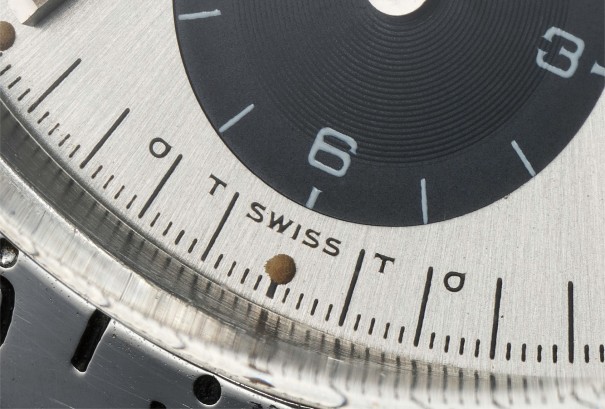
What is a Rolex Sigma Dial? Complete Guide
The vintage watch space is full of terms and nicknames. Some are created by Rolex themselves, but when it comes to vintage, for the vast majority, the name has derived from somewhere else. Common for vintage Rolex watch terms is that collectors have started using a word to describe a particular detail of a watch, and then the term has stuck.
If you are exploring and learning more about the world of vintage Rolex watches, you cannot help but have realized that there are tons of words and terms that are used to describe vintage Rolex watches. One of these terms is ”Sigma dial”. But what does it mean?
What is a Rolex Sigma dial?
So what does Rolex Sigma dial mean, and what does it refer to?
The term sigma for watches goes back to the 1970s when an official initiative to highlight the use of gold on watches was created by Swiss watchmakers who were members of the L’Association pour la Promotion Industrielle de l’Or – The Association for the Industrial Promotion of Gold. For the sake of simplicity, we will refer to this as APIOR.
The purpose of APIOR was to make it clearer about which material watches were made of. The focus was of course precious metal watches. APIOR was ”inspired” by COSC – Controle Officiel Suisse des Chronometers, and wanted to create a similar common regulation of how gold was used in timepieces. This is of particular importance for white gold watches, as they can be easily mistaken for steel.
APIOR patented the Greek letter Sigma, which looks like this: σ.

The group filed a patent in August 1971 and it was registered in July 1972. According to the patent, the sigma symbol was first used on the 25th of February 1970, and used either on the dial, case back, or bracelet, to make it clear that gold is used. A number of different manufacturers started using the Sigma symbol to highlight the presence of gold. One of those was Rolex, but others such as IWC and Patek Philippe also hopped on the train.
According to the patent, the Sigma symbol certifies:
”that the goods are of Swiss origin and contain solid gold up to a certain standard as established by the Swiss statutory requirements concerning the control of the use of gold and meet standards and quality established by the applicant.”
This brings us to the key point of this post – Rolex and Sigma dials.
Rolex Sigma dial
As mentioned, Rolex joined the concept of APIOR in the late 1960s, as this is as early as Sigma dials on Rolex watches can be found, but they are most commonly found on Rolex watches from the 1970s.

But as a matter of fact, Rolex only used the Sigma symbol for a few years, mainly in the 1970s, and therefore, relatively few Rolex watches with the Sigma symbol exists. With that said, Sigma Rolex dials are rare and tend to be more collectible. This is especially true for watches that are already highly sought-after by collectors, such as the Daytona. The Sigma dial just adds an additional collectible detail that makes it even more special.
Rolex also used the Sigma symbol to some extent in the 1960s because Rolex and other manufacturers actually started using the Sigma symbol for their watches even before the symbol was officially introduced.
So how can you identify a Rolex Sigma dial?
The symbol can be found at the bottom of the dial at 6 o’clock on Rolex watches – on each side of the ”T SWISS T” print. This printing, describes, as explained in this article, that the watch is made in Switzerland and that it uses tritium as its luminous material. The additional sigma symbols
A Rolex Sigma dial will thus have this printing at 6 o’clock:

”σT SWISS Tσ”
But how come you can find this printing own steel watches as well? The explanation is that the Sigma symbol then indicates that the hour markers on the watch are made in 18K white gold. Most commonly, in fact, is that steel Rolex watches will have this marking. This is primarily because it can be easy to mistake the hour markers for steel. You will also be able to find the sigma symbol on two-tone and full gold Rolex watches as well.
Sigma dials on Rolex watches can be found on some Daytona, Datejust, Cellini, Day-Date, and Date watches. With that said, the symbol wasn’t used by Rolex on all its watches. One reason for this is that not all steel Rolex watches at the time featured white gold indices, unlike today.
Conclusion
Since Rolex only used the Sigma dial for a handful of years in the 1970s, it comes as no surprise that the small σ markings can add to the value of vintage Rolex watches. Today, vintage Rolex Daytona chronographs with Sigma dials are particularly collectible and run a premium when they surface at auction.
In the case of vintage watches, small details are offered significant attention as they are typically considered to be everything. And when it comes to determining a dial’s originality, small changes matter a lot – yes, a lot! Why? This is because any service dial or re-dial will significantly influence the overall value of a timepiece. The watch dials from the 1970s feature typical, round little marks often seen surrounding the term ‘Swiss Made’ or ‘Swiss’. So, what these small marks actually are?
These little marks are the Greek letter ‘sigma’ in lower case, and such dials are auspiciously referred to as ‘sigma dials’. Interestingly, if you explore the vintage Rolex collection, you will discover different design details. Today, let’s take a quick look at the origin of Rolex Sigma dials and how it adds to the value of a vintage Rolex timepiece.
However, the ‘Sigma’ symbol that is used on the bracelet, case-back, or dial of a watch typically denotes the presence of gold.





Whats the exact period for rolex that has sigma dial?
Hi,
It depends on the model.
According to the patent, the sigma symbol was first used on the 25th of February 1970. Rolex stopped with Sigma dials around the end of the 1970s.
Kind regards,
Millenary Watches
Mine 6263 serial 4.13 million, is that fall in the sigma period?